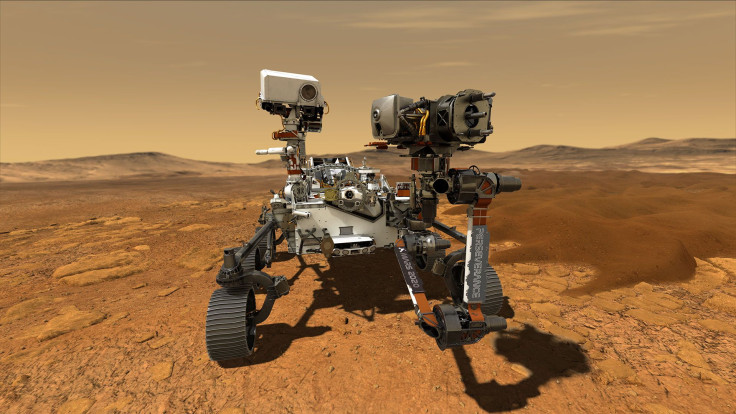SHERLOC And WATSON: NASA Has 'Detectives' Aboard Perseverance Rover
KEY POINTS
- NASA's Perseverance rover is equipped with two "detectives" named SHERLOC and WATSON
- Together, SHERLOC and WATSON will investigate Mars for signs of past microbial life
- SHERLOC uses ultraviolet laser light just like crime scene investigators
NASA has two "detectives" aboard the Perseverance Rover that is expected to touch down on Mars in 2021. Together, SHERLOC and WATSON will help Perseverance fulfill its mission of looking for traces of past microbial life on the Red Planet.
SHERLOC (Scanning Habitable Environments with Raman & Luminescence for Organics & Chemicals) is an instrument about the size of a smartphone and can be found at the end of Perseverance Rover's arm. Its main job is to hunt for minerals, organic molecules and potential biosignatures in Martian rocks.
Just like its namesake, SHERLOC also has a modern magnifying glass, this time in the form of the WATSON camera, so it can see in finer detail. It also uses ultraviolet laser light to look for organic chemicals, just like modern crime scene investigators.
"Key, driving questions are whether Mars is or was ever inhabited, and if not, why not? The SHERLOC investigation will advance the understanding of Martian geologic history and identify its past biologic potential," principal investigator Luther Beegle said about the instrument.
As mentioned, WATSON (Wide Angle Topographic Sensor for Operations and eNgineering) is a camera that will take close-up pictures of Martian rocks, specifically their textures. It can also take selfies of the Perseverance Rover, just like the Mars Hand Lens Imager does on the Curiosity.

Together, SHERLOC and WATSON will study the Martian rocks for traces of certain minerals and organic molecules that are the building blocks of life on Earth, with SHERLOC first scanning the specific rock with its laser, then WATSON taking images of the sample.
By using data from SHERLOC and WATSON, the mission team can also look at how mineral layers on Mars formed. The data from the two can even be combined with the information from other instruments in the rover to determine whether a specific rock could possibly hold signs of past life.
SHERLOC can also perform various experiments on its own. For instance, the Perseverance Rover will bring spacesuit fabric samples and helmet materials to the Red Planet. During its mission, SHERLOC will scan the materials for any changes that may happen to them over time. The data it will gather will help NASA determine the kind of astronaut spacesuits and gear best suited for the first astronauts to be sent to Mars.
The Perseverance Rover is expected to launch this summer and arrive on Mars by February 2021. It is part of a program that aims to bring the next man and the first woman to the Moon by 2024, and to bring the first humans to Mars.

© Copyright IBTimes 2024. All rights reserved.






















